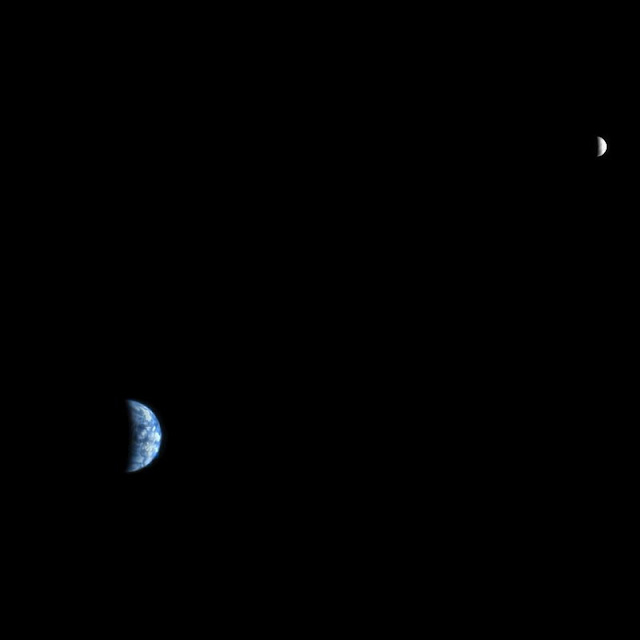Here is the full version of this week's guess the planet picture:
Several readers speculated that this week’s guess the planet
post might be the north pole of a planet, the question being which one. We don’t
have to look massively far from home to find the region depicted here, as it is
the north pole of Earth. The bright material covering much of this image is sea
ice in the arctic sea.
This image was acquired by the MODIS instrument on NASA’s
Terra satellite in orbit around Earth. NASA shared this image in their visible
earth gallery, and note that it is rare to see a true colour image of this
area, as it is frequently blanketed in clouds. Some clouds are visible in this
image being the irregular bright features in the lower half of the image. The dark
regions are open water, and the cracks are “leads” or fissures in the ice.
Sea ice is common in the cold oceans of Earth’s poles, where
vast sheets of ever shifting ice float on the surface of the Arctic and Antarctic
Oceans. However the impact of anthropogenic climate change on this region is
dramatic. The wintertime extent of arctic sea ice has reached a record low for
the second year running in 2016. This trend is likely to continue as the ocean
temperatures continue to rise. In March this year NASA’s Goddard institute
released a time lapse video of the growth of winter sea ice across the arctic throughout
the winter of 2015-2016. It remains to be seen whether this trend will continue
through the winter of 2017 as well.
In many ways water ice is quite a peculiar material. The
fact that it floats on liquid water demonstrates that it has a lower density in
its solid form than it does as a liquid. For most materials this is the other way
around, with the solid being denser than the liquid.
The reason for water’s odd behaviour are hydrogen bonds. The
hydrogen and oxygen atoms that make up a water molecule have opposite
electrical charges. The oxygen atoms are highly electronegative, while the
hydrogen atoms have a positive charge. Within the molecule itself these charges
cancel out, but because of the shape of a water molecule one end tends to be
slightly positive, while the other is slightly negative. The result is that
adjacent water molecules experience an intermolecular attraction. This phenomenon
affects the boiling point of water, and produces some interesting effects when
phase changes occur.
When water freezes to form ice, the hydrogen bonds result in
a crystalline lattice forming. The water molecules become locked into a
hexagonal network with large gaps in between. The result is a material with
very low overall density, compared to its liquid form. The hexagonal structure
of ice crystals results in another phenomenon which we see a lot of depictions
of at this time of year. Small ice crystals grow outwards, forming complex patterns,
and the hexagonal structure at the microscopic scale results in striking symmetry
as it does so. The result is the six sided snow flake.
I hope that you all enjoy your winter celebrations, whether they involve snow, ice or water. There won't be a post next week, but Guess the planet will resume in the first week of January.
References:
NASA timelapse and more information on sea ice extent. https://www.nasa.gov/feature/goddard/2016/2016-arctic-sea-ice-wintertime-extent-hits-another-record-low
Image Credits:
NASA Modis image of the north pole in 2000: http://visibleearth.nasa.gov/view.php?id=55099
Public domain photograph of a snowflake by Wilson Bentley
via Wikipedia https://en.wikipedia.org/wiki/Snowflake#/media/File:Bentley_Snowflake8.jpg











